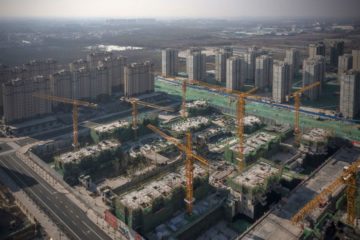 Jeremy Wallace in The Polycrisis:
Jeremy Wallace in The Polycrisis:
China has ended zero-Covid. The resultant viral tsunami is crashing through China’s cities and countryside, causing hundreds of millions of infections and untold numbers of deaths. The reversal followed widespread protests against lockdown measures. But the protests were not the only cause—the country’s sagging economy also required attention. Outside of a few strong sectors, including EVs and renewable energy technologies, China’s economic dynamo was beginning to stutter in ways it had not in decades.
Whenever global demand or internal growth faltered in the recent past, China’s government would unleash pro-investment stimulus with impressive results. Vast expanses of highways, shiny airports, an enviable high-speed rail network, and especially apartments. In 2016, one estimate of planned new construction in Chinese cities could have housed 3.4 billion people. Those plans have been reined in, but what has been completed is still prodigious. Hundreds of millions of urbanizing Chinese have found shelter, and old buildings have been replaced with upgrades.
The scale of construction has been so prodigious, in fact, that it has far exceeded demand for housing. Tens of millions of apartments sit empty—almost as many homes as the US has constructed this century. Whole complexes of unfinished concrete shells sixteen stories tall surround most cities. Real estate, which constitutes a quarter of China’s GDP, has become a $52 trillion bubble that fundamentally rests on the foundational belief that it is too big to fail. The reality is that it has become too big to sustain, either economically or environmentally.
More here.
